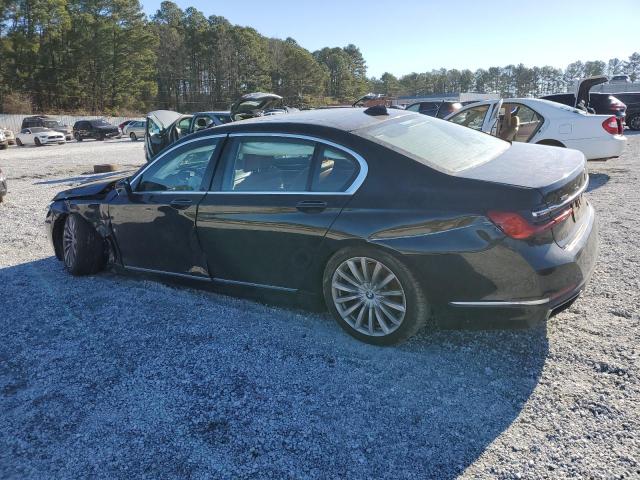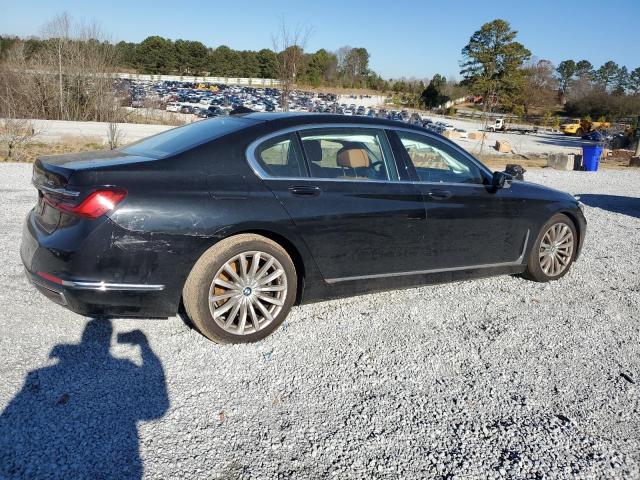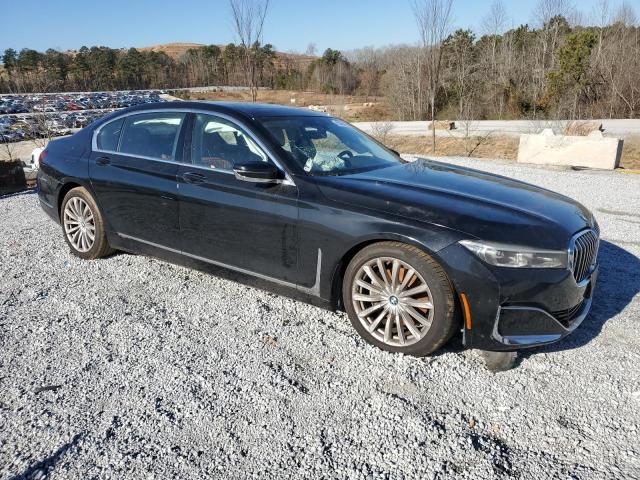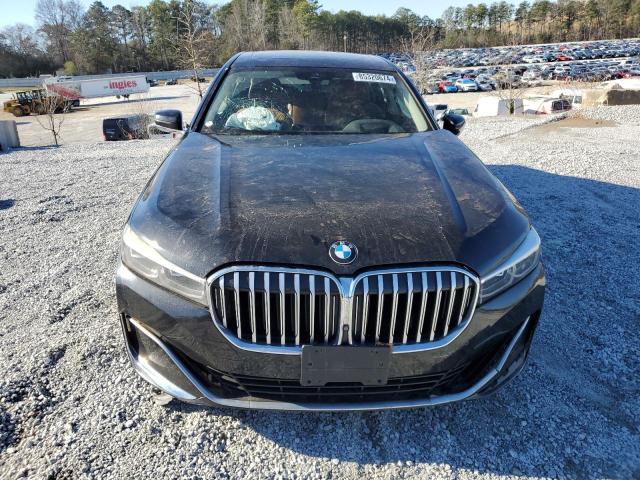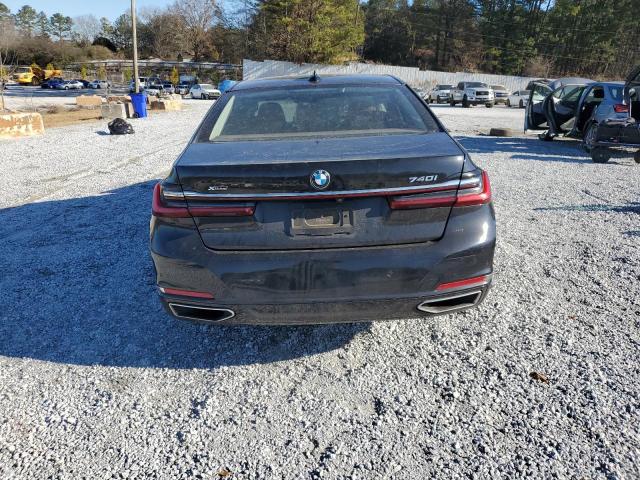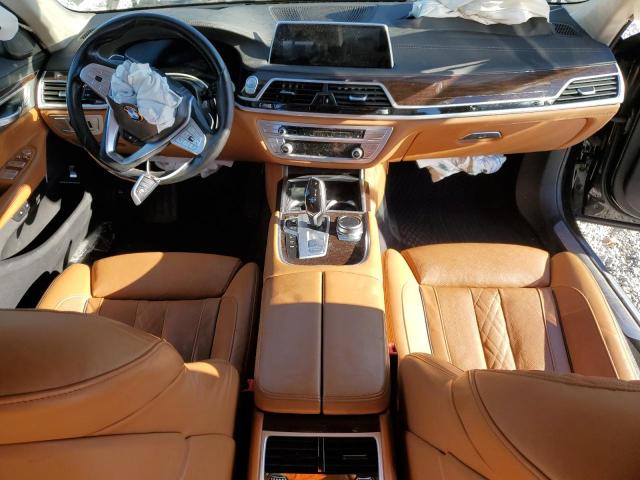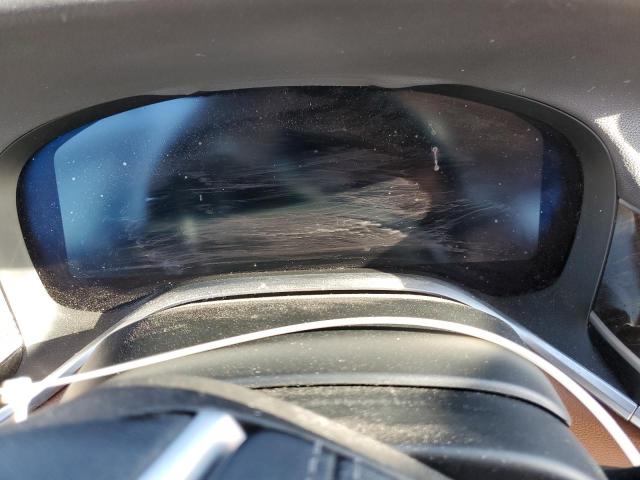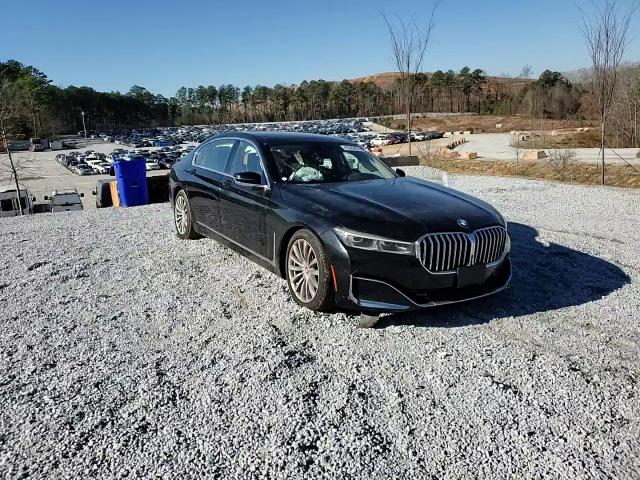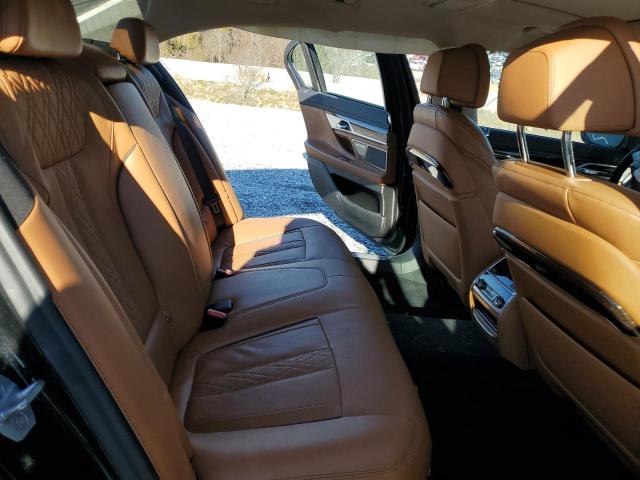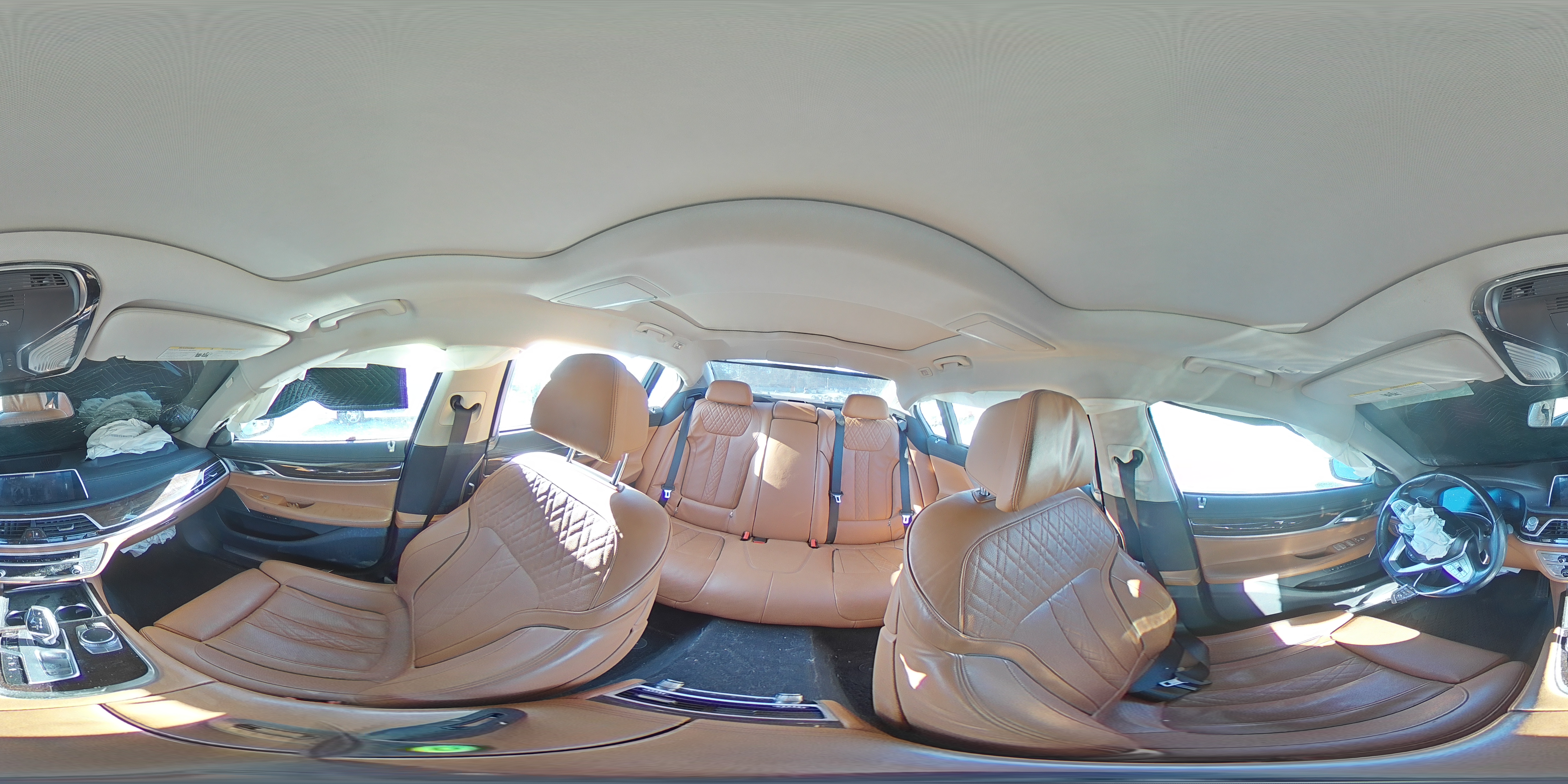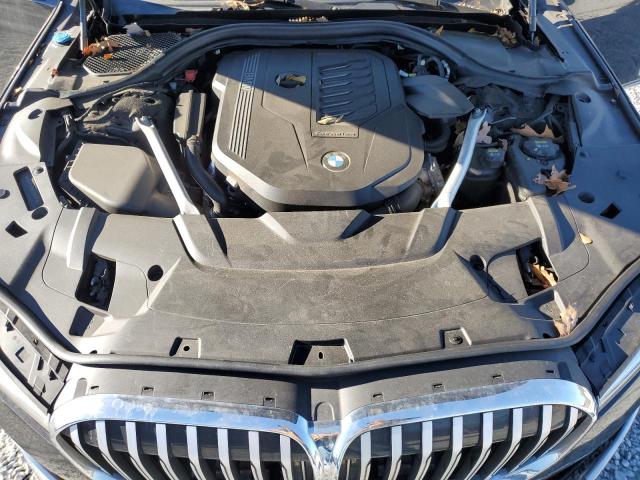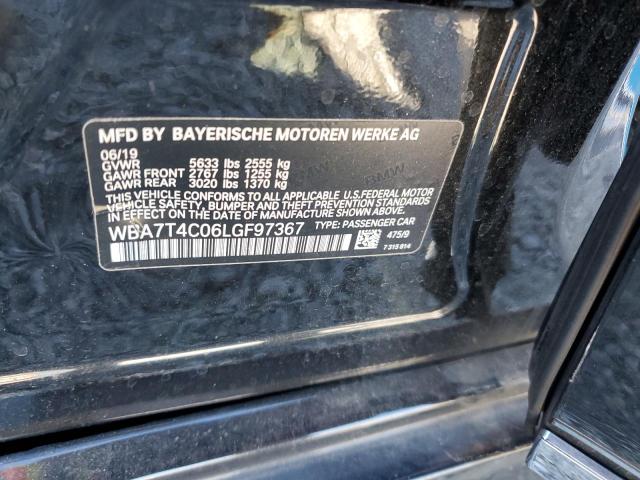2020 BMW 740I | WBA7T4C06LGF97367
 ❯
❯
Specifications
7
~$140,000
Engine: 4.4L twin-turbocharged V8
Torque: 800 Nm
0–100 km/h: ~3.5 s
The inclusion of the Alpina B7 elevates the 7 Series from an executive cruiser to a genuine autobahn stormer with track-ready composure. Tuned by Alpina – BMW’s long-time performance and luxury partner – the B7 blends relentless power with chassis precision and bespoke refinement. It features a specially enhanced version of the 4.4L twin-turbo V8 with revised turbochargers, intake, cooling, and software, pushing it to over 600 hp and delivering supercar-like acceleration.
Beyond sheer speed, the B7’s adaptive dampers, rear-wheel steering, and reinforced xDrive system make it surprisingly agile for a full-size sedan. Aerodynamic enhancements, exclusive wheels, and Alpina’s subtle badging set it apart visually while preserving the 7 Series’ understated elegance.
Even outside of the B7, M Sport-equipped models and high-output variants like the 750i or M760Li offered strong performance credentials. However, the Alpina B7 stands out as the ultimate fusion of speed, comfort, and exclusivity — giving the 7 Series a rightful place among performance-oriented vehicles, not just as a luxury flagship but as a grand touring weapon in tailored German form.
Body Styles
The BMW 7 Series of this generation is offered exclusively as a four-door luxury sedan, either in standard or long-wheelbase form. The design evolved with sharper lines, a more prominent kidney grille, and extensive use of lightweight materials such as carbon fiber-reinforced plastic (CFRP) to reduce weight while maintaining structural rigidity. Post-2019 facelift models featured even larger grilles, slimmer headlights, and redesigned bumpers, emphasizing greater visual presence and aligning the 7 Series with newer BMW design trends.
Model Name Meaning (Manufacturer)
In BMW’s nomenclature, the "7" series designation signifies the brand’s flagship luxury sedan, representing the ultimate in comfort, innovation, and prestige within the BMW lineup. The numbers following (e.g., 740, 750) traditionally indicated engine displacement in deciliters, although in modern times they serve more to rank models by performance and market positioning.
Model Name Meaning (Languages)
The "7 Series" branding conveys exclusivity and status across global markets. Whether in North America, Europe, Asia, or the Middle East, the 7 Series name is synonymous with luxury, executive transport, and cutting-edge automotive technology, transcending language barriers and maintaining BMW’s international image of sophisticated performance.
Body & Interior Colors and Rims
The BMW 7 Series (G11/G12) offers a broad selection of sophisticated exterior colors designed to emphasize its elegant, stately silhouette. Timeless shades such as Black Sapphire Metallic, Alpine White, and Mineral White remain popular choices, while deeper, richer tones like Bernina Grey Amber Effect, Imperial Blue, and Dravit Grey Metallic appeal to buyers seeking understated distinction. Special Individual finishes, including Aventurin Red and Frozen Cashmere Silver, allowed for bespoke personalization, reinforcing the car’s premium image.
Inside, the 7 Series delivers an environment of uncompromising luxury and technological excellence. Standard interiors feature Dakota leather in classic colors like Canberra Beige and Cognac, while higher trims and Individual options offer extended and full Merino leather in sophisticated tones such as Tartufo and Smoke White. Open-pore fine wood, piano black, carbon fiber, or metallic trim elements provide customizable ambiance, depending on the buyer’s preference for warmth, sportiness, or minimalism. The dashboard and center console feature finely detailed switchgear, crystal-finished gear selectors, and expansive displays for BMW’s iDrive system, including gesture control and a fully digital instrument cluster. Executive Lounge packages introduced options like reclining rear seats with massaging functions and dedicated rear-seat entertainment screens, making the long-wheelbase versions true rolling luxury offices.
Wheel designs for the 7 Series vary from 18-inch lightweight alloys on standard models to intricate 20- and 21-inch multi-spoke and double-spoke wheels for M Sport, Alpina B7, and M760Li versions. These designs balance elegance with visual strength, with higher trims offering polished, bicolor, or jet-black finishes for a more athletic or exclusive appearance.
Top Expensive Options
- Executive Lounge Seating Package (Reclining Rear Seats, Massage, Footrests): ~$7,500
- Bowers & Wilkins Diamond Surround Sound System (16 Speakers, 1400W): ~$3,400
- Panoramic Sky Lounge LED Roof: ~$900
- Rear Executive Lounge Rear Entertainment System (Dual Screens + Tablet Control): ~$2,700
- Integral Active Steering (Rear-Wheel Steering): ~$1,800
- BMW Individual Full Merino Leather Upholstery: ~$5,000
- Driving Assistance Professional Package (Active Cruise, Lane Keep, Traffic Jam Assist): ~$1,700
- Adaptive LED Laser Headlights: ~$1,000
- Alcantara Headliner (Anthracite or optional Individual colors): ~$1,200
- Carbon Core Body Structure (standard but visually highlighted as a premium feature)
vs Competitors
The BMW 7 Series (G11/G12) positioned itself against rivals like the Mercedes-Benz S-Class (W222), Audi A8 (D5), and Lexus LS. Compared to the S-Class, the 7 Series emphasized a more dynamic driving experience, lighter body construction, and sharper handling, though the Mercedes arguably led in ultimate ride comfort and interior opulence. Against the Audi A8, the 7 Series offered a more engaging and less tech-overloaded experience. In comparison to the Lexus LS, BMW maintained an advantage in driving dynamics and brand prestige in Europe and North America. The G11/G12 7 Series excelled at blending driver engagement with rear-seat executive luxury, offering a unique proposition for owners who often preferred to be both chauffeur-driven and drive themselves.
Fun Fact
The BMW 7 Series (G11/G12) was the first production car to incorporate carbon-fiber-reinforced plastic (CFRP) in its core body structure alongside steel and aluminum, significantly reducing weight without compromising strength. It also pioneered Gesture Control technology for the infotainment system, allowing drivers to control navigation, audio, and communication features with simple hand movements — a technology that later spread across the BMW lineup.
Lot Details
-
Sale Date16/Jun/2025
-
Lot Number85320674
-
Sale document
-
Location
-
Odometer0 miles (0 km)
-
Primary Damage:ALL OVER
-
Secondary DamageMECHANICAL
-
Fuel
-
Engine Type3.0L 6
-
Transmission
-
Drive Type
-
Color
Final Bid BMW 7 Series (2020)
$10,100
$26,492
$63,000
Specifications
7
~$140,000
Torque:
0–100 km/h:
The inclusion of the Alpina B7 elevates the 7 Series from an executive cruiser to a genuine autobahn stormer with track-ready composure. Tuned by Alpina – BMW’s long-time performance and luxury partner – the B7 blends relentless power with chassis precision and bespoke refinement. It features a specially enhanced version of the 4.4L twin-turbo V8 with revised turbochargers, intake, cooling, and software, pushing it to over 600 hp and delivering supercar-like acceleration.
Beyond sheer speed, the B7’s adaptive dampers, rear-wheel steering, and reinforced xDrive system make it surprisingly agile for a full-size sedan. Aerodynamic enhancements, exclusive wheels, and Alpina’s subtle badging set it apart visually while preserving the 7 Series’ understated elegance.
Even outside of the B7, M Sport-equipped models and high-output variants like the 750i or M760Li offered strong performance credentials. However, the Alpina B7 stands out as the ultimate fusion of speed, comfort, and exclusivity — giving the 7 Series a rightful place among performance-oriented vehicles, not just as a luxury flagship but as a grand touring weapon in tailored German form.
Body Styles
The BMW 7 Series of this generation is offered exclusively as a four-door luxury sedan, either in standard or long-wheelbase form. The design evolved with sharper lines, a more prominent kidney grille, and extensive use of lightweight materials such as carbon fiber-reinforced plastic (CFRP) to reduce weight while maintaining structural rigidity. Post-2019 facelift models featured even larger grilles, slimmer headlights, and redesigned bumpers, emphasizing greater visual presence and aligning the 7 Series with newer BMW design trends.
Model Name Meaning (Manufacturer)
In BMW’s nomenclature, the "7" series designation signifies the brand’s flagship luxury sedan, representing the ultimate in comfort, innovation, and prestige within the BMW lineup. The numbers following (e.g., 740, 750) traditionally indicated engine displacement in deciliters, although in modern times they serve more to rank models by performance and market positioning.
Model Name Meaning (Languages)
The "7 Series" branding conveys exclusivity and status across global markets. Whether in North America, Europe, Asia, or the Middle East, the 7 Series name is synonymous with luxury, executive transport, and cutting-edge automotive technology, transcending language barriers and maintaining BMW’s international image of sophisticated performance.
Body & Interior Colors and Rims
The BMW 7 Series (G11/G12) offers a broad selection of sophisticated exterior colors designed to emphasize its elegant, stately silhouette. Timeless shades such as Black Sapphire Metallic, Alpine White, and Mineral White remain popular choices, while deeper, richer tones like Bernina Grey Amber Effect, Imperial Blue, and Dravit Grey Metallic appeal to buyers seeking understated distinction. Special Individual finishes, including Aventurin Red and Frozen Cashmere Silver, allowed for bespoke personalization, reinforcing the car’s premium image.
Inside, the 7 Series delivers an environment of uncompromising luxury and technological excellence. Standard interiors feature Dakota leather in classic colors like Canberra Beige and Cognac, while higher trims and Individual options offer extended and full Merino leather in sophisticated tones such as Tartufo and Smoke White. Open-pore fine wood, piano black, carbon fiber, or metallic trim elements provide customizable ambiance, depending on the buyer’s preference for warmth, sportiness, or minimalism. The dashboard and center console feature finely detailed switchgear, crystal-finished gear selectors, and expansive displays for BMW’s iDrive system, including gesture control and a fully digital instrument cluster. Executive Lounge packages introduced options like reclining rear seats with massaging functions and dedicated rear-seat entertainment screens, making the long-wheelbase versions true rolling luxury offices.
Wheel designs for the 7 Series vary from 18-inch lightweight alloys on standard models to intricate 20- and 21-inch multi-spoke and double-spoke wheels for M Sport, Alpina B7, and M760Li versions. These designs balance elegance with visual strength, with higher trims offering polished, bicolor, or jet-black finishes for a more athletic or exclusive appearance.
Top Expensive Options
- Executive Lounge Seating Package (Reclining Rear Seats, Massage, Footrests): ~$7,500
- Bowers & Wilkins Diamond Surround Sound System (16 Speakers, 1400W): ~$3,400
- Panoramic Sky Lounge LED Roof: ~$900
- Rear Executive Lounge Rear Entertainment System (Dual Screens + Tablet Control): ~$2,700
- Integral Active Steering (Rear-Wheel Steering): ~$1,800
- BMW Individual Full Merino Leather Upholstery: ~$5,000
- Driving Assistance Professional Package (Active Cruise, Lane Keep, Traffic Jam Assist): ~$1,700
- Adaptive LED Laser Headlights: ~$1,000
- Alcantara Headliner (Anthracite or optional Individual colors): ~$1,200
- Carbon Core Body Structure (standard but visually highlighted as a premium feature)
vs Competitors
The BMW 7 Series (G11/G12) positioned itself against rivals like the Mercedes-Benz S-Class (W222), Audi A8 (D5), and Lexus LS. Compared to the S-Class, the 7 Series emphasized a more dynamic driving experience, lighter body construction, and sharper handling, though the Mercedes arguably led in ultimate ride comfort and interior opulence. Against the Audi A8, the 7 Series offered a more engaging and less tech-overloaded experience. In comparison to the Lexus LS, BMW maintained an advantage in driving dynamics and brand prestige in Europe and North America. The G11/G12 7 Series excelled at blending driver engagement with rear-seat executive luxury, offering a unique proposition for owners who often preferred to be both chauffeur-driven and drive themselves.
Fun Fact
The BMW 7 Series (G11/G12) was the first production car to incorporate carbon-fiber-reinforced plastic (CFRP) in its core body structure alongside steel and aluminum, significantly reducing weight without compromising strength. It also pioneered Gesture Control technology for the infotainment system, allowing drivers to control navigation, audio, and communication features with simple hand movements — a technology that later spread across the BMW lineup.

